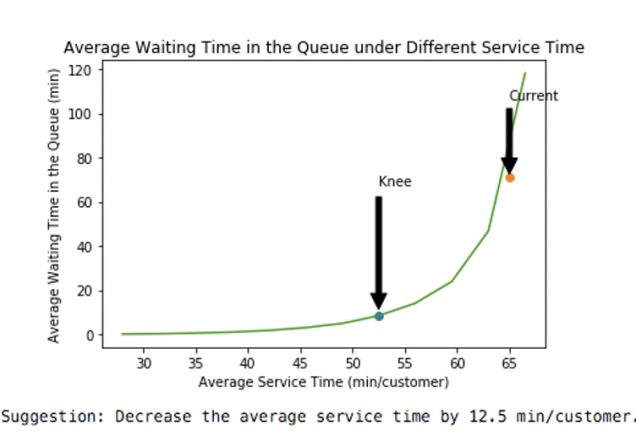Decision Support System for Optimizing Capacity Buffers
Researchers: John Maleyeff, Canan Gunes Corlu, Tianhuai Ma, Chenshu Yang, & Yanting Shen
Queuing models are widely used in many industries, such as restaurants and call centers. In healthcare, waiting time in emergency room and other departments can be long. This research aims to develop a system to support planners. In particular, it finds the best way to allocate resources (personnel, equipment, beds, etc.) that provide services to patients. Since patients usually come without appointments and they have uncertain arrival patterns and service times, a Monte Carlo simulation, written in Python, is created as the basis of the decision algorithm.

The concept of the knee (optimum server utilization) is determined by Kleinrock, who used a power function that identifies the level of server utilization that optimizes server utilization (call the “knee” of the waiting time versus server utilization curve) so that patient waiting time are reasonable and costs are acceptable. The knee is calculated based on user inputs – patient’s average arrival rate, the number of servers, average service time, and the coefficient of variation of service times. An important result is that server utilizations can be optimized by applying Lean methods to remove unnecessarily or wasteful activities without incurring significant operating costs.
Image by Chenshu Yang